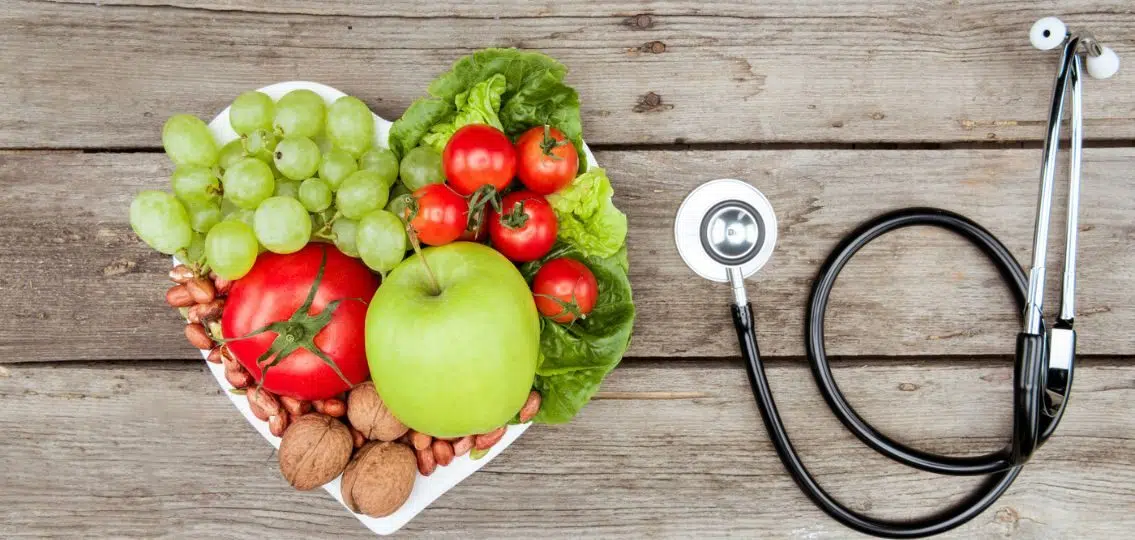While body positivity and “health at any size” awareness are rising, kids today still worry about their image or personal brand. They may try new diets based on increasing awareness of social issues or simply to fit in. Or they may be painfully aware that they don’t have the “right look” and think that a new diet will help. According to Johns Hopkins All Children’s Hospital, eating disorders carry a higher risk of death than any other mental illness. Of the 30 million people in the U.S. with an eating disorder, 95 percent are between the ages of 12 and 25. While these statistics are frightening, parents should know eating disorders occur in about nine percent of the population, so they are not as common as media coverage would suggest.
Your Teen spoke with an expert on adolescent nutrition to find out when to worry and how parents can encourage healthy eating habits. Amy Reed, MS, RD, CSP, LD is a pediatric dietitian and spokesperson for the Academy of Nutrition and Dietetics. She acknowledges that teens’ eating habits are poor, but insists that “It’s never too late to start eating healthy, even if you’re 60 years old and you’ve had McDonald’s every day.”
Teens and Food: Teen diets in the US score less healthy than all other age groups.
The USDA reports on American diets by subgroup, through its Healthy Eating Index. While the average American diet is lacking overall, teenagers score the lowest of all age groups. Reed isn’t surprised. “Teenagers are gaining independence. They’re away from home. They’re choosing more of their own food. Peer pressure starts to come in a little bit.” One concern she raises is that “the only food group teenagers meet is grains. Not whole grains, but white bread, white crackers, snack foods, that kind of thing. They’re lacking nutrients, particularly protein, which can lead to iron deficiency.”
How can parents help teens make good food choices?
Being aware of and following the USDA dietary guidelines is a good start. Revised every five years, they provide a blueprint for healthy eating. The most recent guidelines (for 2020 to 2025) outline four main principles:
- Follow a healthy dietary pattern at every stage of life.
- Customize and enjoy choices that reflect your personal preference and culture.
- Focus on meeting food group needs with nutrient-dense foods that provide a lot of vitamins, minerals, and fiber.
- Limit foods and beverages that are high in added sugar, saturated fat, and sodium, and limit alcoholic beverages.
Reed says, “One of the big things parents can do is have family meals. Evidence shows that when families eat meals together, the kids have a higher intake of fruits and vegetables. They also have overall better mental health because they’re sitting down with their family every night.” While her second piece of advice does not relate to nutrition, it definitely improves nutrition quality. She adds that it’s also important to pay attention to what food you choose to put on the table. “If they ate their last meal out with friends, then make sure tonight’s dinner is more well-rounded because they probably didn’t get that when they went out.”
Put calcium in the bank.
While teens aren’t thinking about their golden years, what they eat now can impact their bone health later in life. Reed points out that teenagers have a rare opportunity: they can bank calcium. “But you can only make deposits when you’re young,” she says. “Once you get in your mid-twenties or early thirties, that bank is shut. What you’ve got is what you have. So you need to eat dairy products or dairy-alternative products, greens that are higher in calcium, or calcium-fortified foods, or even take a supplement. This is the only time in your life you’re going to be able to bank it.”
She adds that Vitamin D improves the absorption of calcium, but we might not be getting enough. “We get it from the sun, but when it’s sunny, we put sunblock on. But sunblock blocks the conversion of the active form of vitamin D from the sun. Vitamin D isn’t that plentiful in a lot of foods. So sometimes you have to get vitamin D from a supplement.”
Are supplements for teens necessary?
“It depends,” says Reed. “As a dietician, I ask: Do they eat foods from all food groups? If the answer is no, what food groups do they not eat from? And if they eat meat, but won’t eat any fruits and vegetables, they could probably use a vitamin.”
While gummy vitamins are popular, she points out that most gummy vitamins don’t provide iron. Gummies are okay for teens who eat meat, beans, or iron-dense greens; for those who don’t get enough iron, “I would recommend a chewable or a swallowable tablet. Some nutrients are just not stable in the gummy form, and gummy vitamins are not as complete.”
How skinny is too skinny?
Some families are concerned about their teen’s limited diet and may worry that they’re malnourished. Reed says teens should be charted on a growth chart until the age of 20. A BMI less than the fifth percentile may be a concern, “but if that’s where that kid has always been, then I wouldn’t call them malnourished because it’s what their curve has always been.” Instead, she says to look for things like protruding ribs. “Is that how they look or is this new?” In acute malnutrition, you’ll see more of a rapid drop in weight.” She adds, “If you’re concerned, ask your primary care provider for a referral to a dietician that works with adolescents. You can find that on the eatright.org website.”
The danger of weight bias.
Reed says that weight bias is an issue for both adults and children in schools, and even in healthcare environments. “We’ve had this idea for years that when somebody is overweight, it’s a personal choice,” she says. “But we know it’s much more than that now.” This is a problem because “there’s evidence to show that when we stigmatize somebody based on their weight, it may cause them to not take care of themselves.” They may refuse to seek medical care and even delay treatments. Healthcare providers are sometimes part of the problem. Some patients report not being taken seriously, and being told that they just have to improve their diet. She likens this attitude to treating “every medical ailment like it was that person’s fault.”
What you say and do matters.
While people like to blame social media for distorting teens’ views on healthy bodies, parents can inadvertently contribute to the problem. Children often internalize how a parent talks about food and body size, which is why Reed emphasizes the importance of modeling a healthy body image. She shares this example: a parent of her teenage client mentioned that they’re dieting, and the child is the same size as the parent. Reed says this leads the teen to believe: ‘If they’re dissatisfied with their body, then I must be dissatisfied with mine.’” She says that if a child is to celebrate and accept their body, they need to see a parent do so as well. Hearing negative talk based on one’s size causes children to withdraw and not want to exercise. “Children come in all different sizes,” says Reed, “and we have to accept all those sizes.”
But also, don’t worry too much.
Reed advises parents not to worry too much. Allow teens some independence so they have opportunities to learn from their mistakes. When they do mess up, help them make the connection between poor diet choices and not feeling well. Finally, walk the talk—model a healthy lifestyle. You have more influence than you think.




